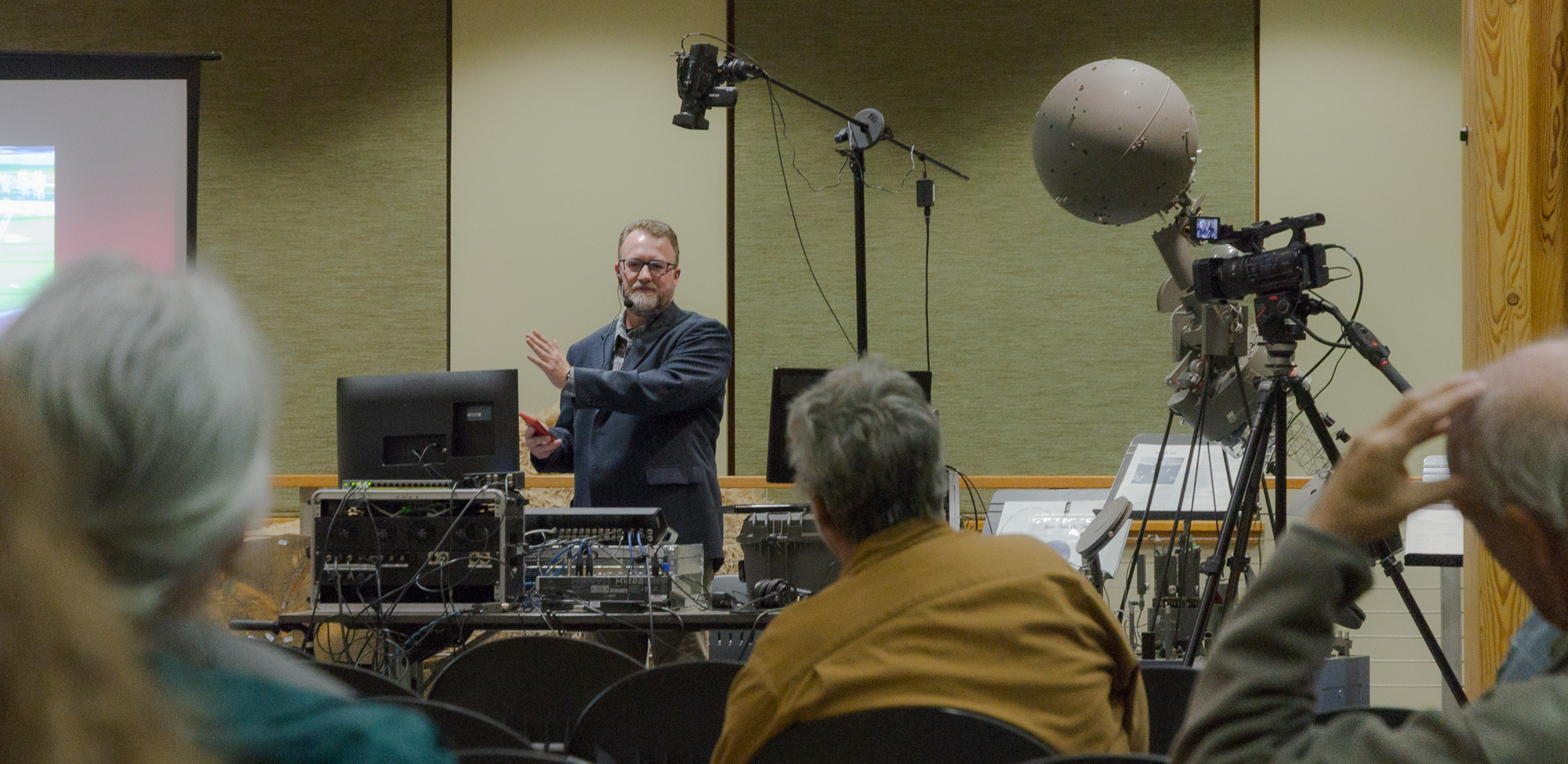Binkard shares history of CSC Live

CHADRON – Chadron State College Digital Graphic Designer Daniel Binkard opened the 2022 Graves Lecture Series with 10 Years of CSC Live, a presentation detailing the origin, growth, technology, and continued presence of the college’s live event broadcasting team.
“CSC Live, as we see it today, started in 2012,” Binkard said. “Randy Rhine had started as the college president, and he wanted to expand what we were doing with live streaming coverage. So, Dewayne Gimeson (Publications Specialist) and I prepared a list of equipment to purchase and that would enable us to add multiple angles to athletic broadcasts and just generally improve the product.”
Binkard configured the equipment for the first home football game of the semester in September 2012. The opening broadcast featured three cameras, a fixed wide angle shot, a microphone for ambient audio, and a student commentator.
“The game was a little choppy here and there, but we got it out to the public successfully. Over the next few years, I spent time working out what our camera coverage options needed to be for a given game, and where could I make improvements, whether they're in large or small ways,” Binkard said.
He described the different technologies involved in a broadcast, including audio sources like ambient sound and commentators, video from cameras, computer-generated graphics, and replay which are combined, encoded, and sent to the livestream.
“Running the full broadcast doesn't happen with just me. My role as the overall director is to make sure each broadcast goes out in some way. That's where the student workers come in. Without student workers, it's down to just me running a single camera,” Binkard said.
Binkard explained how the number of student workers available for an event impacts the coverage and how the positions of cameras change based on the sport.
“The ideal crew is seven student workers,” Binkard said. “I get one person on commentary and, as more workers are available, fill in the camera, replay, and switching operations.”
He concluded his presentation by answering audience questions about how student workers learn, the technology used in the broadcasts, notable stories, and his greatest triumphs over the years.
“A general triumph is when I've got enough student workers and we're covering a football game and firing on all cylinders. I really like seeing that action. You get the play live and then the replay. Boom, you're showing that on closeup camera. The camera operators are following the action cleanly. It just looks good,” Binkard said.
Category: Campus News, Employee Awards & Achievements
